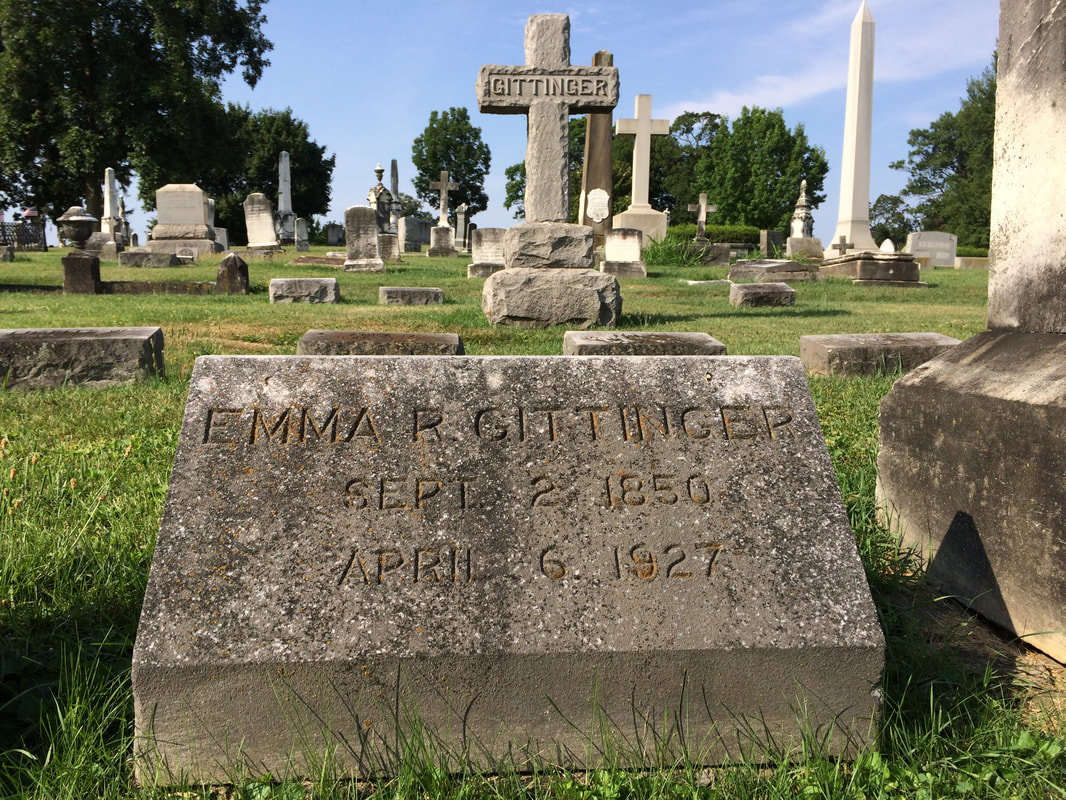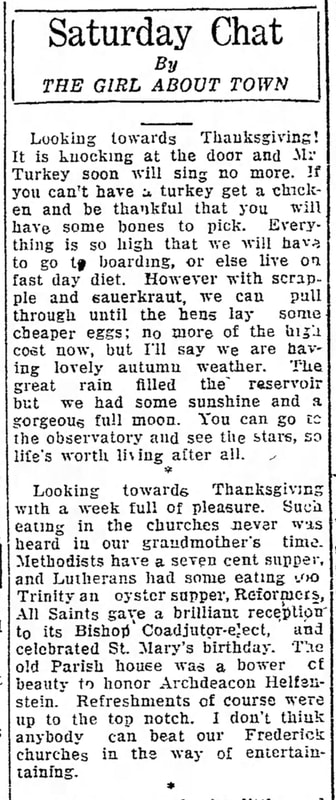 Tom Petty and the Heartbreakers Tom Petty and the Heartbreakers Next weekend, I will be going to see one of my all-time music groups in concert in Baltimore. It’s a tour celebrating the 40th anniversary of Tom Petty and the Heartbreakers. So many hit songs from these Rock n’ Roll legends, with roots in the Gainesville, Florida area. This will be my seventh time seeing them, and I’m bringing three of my sons along. Their playlist of is lengthy and chock’ full of hit songs and memorable videos: Don’t Do Me Like, Breakdown, American Girls, Don’t Come Around Here No More, Runnin’ Down a Dream, Refugee and Freefallin’ to name a few. One song, however, gave me the impetus to write this week’s “Stories in Stone” piece. This is the Heartbreaker’s 1993 offering “Mary Jane's Last Dance.” The catchy chorus made this song a fan favorite, but a haunting video made it even more memorable and gave the group top honors for 1993’s MTV “Music Video of the Year.” The song, and accompanying video, conjures up plenty of abstract meanings and haunting images, although I want to single out a positive connection to a local “Mary Jane” for purposes of this article. This “Mary Jane” is buried in Mount Olivet Cemetery and was somewhat of a mirror who reflected Frederick, Maryland through her social and professional lives.
 Frederick's Visitation Academy Frederick's Visitation Academy Emma’s childhood was a nice one, as she enjoyed a relatively peaceful rearing in a small town. She was the oldest of nine children, having four brothers and four sisters. Her father was a boot and shoe merchant. Turbulence would occur in her pre-teens with the American Civil War. Emma saw the wounded and dying first-hand. Her school, the Frederick Visitation Academy, had been commandeered for use as a makeshift hospital. Emma is also said to have assisted in carrying food and assisting with the care of soldiers at the General Hospital #1 site, located adjacent the Frederick Hessian Barracks (today’s site of the Maryland School for the Deaf). Emma would graduate with the Visitation Academy’s “Class of 1866.” Interestingly, her upbringing was not Catholic as could be imagined. I have found that she was baptized a few months after her birth in Frederick’s German Reformed Church. However, she appears to have jumped ship somewhere down the line as she had a strong lifetime affiliation with All Saints Protestant Episcopal Church of Frederick. A block separated both of these houses of worship located on W. Church Street—not too far of a hike from Emma’s home located on E. Patrick Street.  The former home of Emma Gittinger, located at 224 E. Patrick Street, is now a realty office (far left). Sadly, in Emma's time, the Frederick News was not located just a few short doors away to the west as could be imagined by this photo. The newspaper office was located on N. Market and later at the intersection of W. Patrick and Court streets before moving into the Old Hagerstown & Frederick Trolley Terminal building. Her commute would have been ideal.  Jacob Engelbrecht (1797-1878) Jacob Engelbrecht (1797-1878) Miss Gittinger came from good, patriotic stock—at least on her mother’s side. Emma was a great grand-daughter of Major Peter Mantz of Frederick, an aide-de-camp of George Washington in the Revolutionary War. Through this line, she was also a lineal relative of Barbara Fritchie, the famed nonagenarian that lived down the street. Interestingly, like her sampling of different religions, Emma’s family may have shown support to the Confederacy during the Civil War. Later in life, she became a charter member of the Fitzhugh Lee Chapter, Daughters of the Confederacy. She was the group’s treasurer and took active roles in Decoration Day ceremonies at Mount Olivet. Emma was equally active in the erection of the Francis Scott Key monument, and other civic and patriotic activities. Emma should be best remembered for her professional career—one that began with the Frederick News at the time of the paper’s founding in 1883. She would be faithful to the journalism industry, not to mention her family-based employer, for the next four decades. It all began with a column entitled "The Girl About Town" and later renamed "Saturday Chat with the Girl About Town," which continued weekly until 1927. Looking back from a historical perspective, Emma Gittinger was Frederick’s best documentarian/gossip, seemingly “picking up” where legendary diarist Jacob Engelbrecht left off five years earlier with his death in 1878. The column and its writer came to be known as “Mary Jane, the Girl about Town.” She knew all, and could talk with equal competence on topics ranging from local history to cutting edge social trends. “Mary Jane” was a straight shooter, sometimes brash, and other times crass. She was obstinate, outspoken, knowledgeable and funny. Her columns included sarcasm and tremendous wit, much like her predecessor Herr Engelbrecht. However, she differed greatly in the level in perceived social status—Miss Gittinger was part of the “in-crowd,” compared to the blue collar craftsman who was just part of the crowd. “Mary Jane’s” refined standing in Frederick Society boasted a magical panache—a cutting edge socialite living and partying in Frederick during the late 19th century! Gittinger’s writing has been described as “naturally cheerful and happy temperament, her column was witty and most re-readable. These traits reflected her personality. In later years she spoke of “the new Frederick,” contrasting the modern with a Frederick before the automobile, before the vogue of the telephone, the aeroplane. ”In time, her identity need not be disguised as she was a much sought after public speaker. A focus on World War captured the headlines of the Frederick News and Post of one hundred years ago. “Mary Jane” kindly provided a bit of levity at home, while many local men were fighting for our freedoms across the Atlantic. World War I would cease in 1918, giving way to the Prohibition amidst the Roaring 20’s. Oh what an amazing time to be a socialite. Unfortunately, Emma was slowing down. She was in the twilight of her years, both professionally and personally. Soon there would come the Stock Market Crash of 1929, plunging the country into the Great Depression. A decade later, the US would be engaged in a second, and greater, World War against Germany and Japan. “Mary Jane” would not have the opportunity to comment on either. At 76, Emma Gittinger was one of, if not, the oldest, female columnist in America in 1927. In early January of that year, she came down with a heavy cold, one she couldn’t kick. Her condition worsened, forcing her to vacate her home residence for the hospital in mid-January. One month later she became bedridden. Although she had many visitors, complications set in and she would become weaker. Emma died on April 6th, 1927 at the Frederick City Hospital. “Mary Jane” was gone. Her body gave final punctuation to an eventful life on a Wednesday evening at about 6:30pm. Death was given as due to a dropsical condition. Dropsy is an old term describing the swelling of soft tissues due to the accumulation of excess water. In years gone by, a person might have been said to have dropsy. Today, this condition would be more descriptive, while specifying a particular cause. For example, the person might have edema due to congestive heart failure. Emma’s body was taken to the home of brother George Gittinger living on E. 2nd Street. She would be laid to rest in Mount Olivet, a place she was very familiar with, having spent countless volunteer hours within, not to mention family visitations and picnics on weekends as was customary in the Victorian period. Emma Gittinger’s funeral was largely attended as the below article shows: I find it a bit ironic that Emma is unheralded in a town known for Francis Scott Key, Thomas Johnson, Jr. and Barbara Fritchie. All were patriotic and outspoken, but I’d certainly place money on the fact that none loved their hometown of Frederick more than Emma R. Gittinger. Virtually unknown by people today—she doesn’t even receive mention in the pantheon of local women’s heroes, a list boasting early settler Susanna Beatty, the abovementioned flag-waver Fritchie, collegiate benefactress Margaret Scholl Hood, Frederick City Hospital’s Emma Smith and fashion designer Claire McCardell. Perhaps my humble writing here will introduce local residents to one of the first women newspaper column writers in the United States.
Goodbye Mary Jane—but thanks for all the “dancing” you did within the now yellowed pages of our town newspaper.
0 Comments
Leave a Reply. |
STORIES
|
Archives
July 2024
June 2024
May 2024
April 2024
March 2024
February 2024
January 2024
December 2023
November 2023
September 2023
August 2023
July 2023
June 2023
May 2023
April 2023
March 2023
February 2023
January 2023
December 2022
November 2022
October 2022
September 2022
August 2022
July 2022
June 2022
May 2022
April 2022
March 2022
February 2022
January 2022
December 2021
November 2021
October 2021
September 2021
August 2021
July 2021
June 2021
May 2021
April 2021
March 2021
February 2021
January 2021
December 2020
November 2020
October 2020
September 2020
August 2020
July 2020
June 2020
May 2020
April 2020
March 2020
February 2020
January 2020
December 2019
November 2019
October 2019
September 2019
August 2019
July 2019
June 2019
May 2019
April 2019
March 2019
February 2019
January 2019
December 2018
November 2018
October 2018
September 2018
August 2018
July 2018
June 2018
May 2018
April 2018
March 2018
February 2018
January 2018
December 2017
November 2017
October 2017
September 2017
August 2017
July 2017
June 2017
May 2017
April 2017
March 2017
February 2017
January 2017
December 2016
November 2016















 RSS Feed
RSS Feed